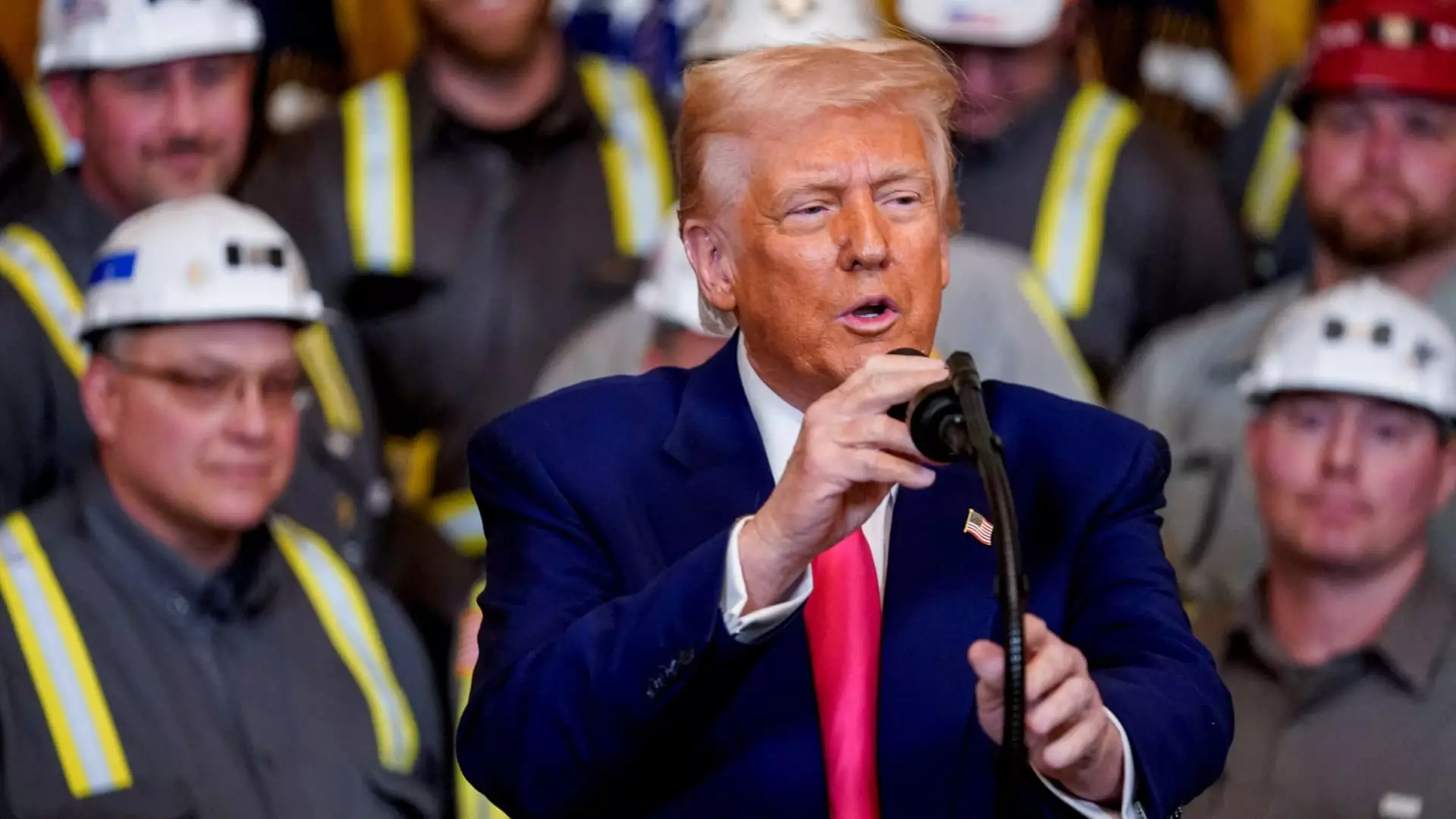In a move that seems counterproductive at best, President Donald Trump has set his sights on resurrecting the beleaguered coal industry in the U.S. by targeting the burgeoning demand for energy from artificial intelligence (AI) data centers. An executive order released in April directs his administration to pinpoint sites with existing coal infrastructure capable of supporting these tech hubs, thereby promoting an outdated energy source that is both economically and environmentally problematic. This could be seen as a misguided strategy, rather than a viable plan for sustainable energy growth.
Trump’s insistence that coal can efficiently power AI data centers undermines the environmental strides that the technology sector has made in recent years. In January, he publicly declared that coal could serve as a backup energy source for data centers, characterizing it as “good, clean coal.” However, a reckless claim like this ignores the irrefutable fact that coal combustion is one of the most carbon-intensive energy sources available. The historical emphasis on coal, a holdover from industrial America, limits our ability to evolve toward an energy-dependent future that prioritizes sustainability over antiquated practices.
Tech and Coal: A Faulty Marriage
The coal industry’s revival seems to hinge largely on the hope that tech giants will embrace fossil fuels as a necessary crutch to meet their energy demands. However, it is important to observe that major players like Amazon, Nvidia, and Anthropic have skirted around commitments to use coal, opting instead for cleaner alternatives, including natural gas and renewables. Kevin Miller from Amazon noted that the immediate future will necessitate a combination of resources, but he specifically avoided endorsing coal outright. This reluctance signals a broader industry consensus favoring cleaner energy avenues over harmful fossil fuels.
Moreover, the severe decline in coal’s share of U.S. electricity generation—from 51% in 2001 to a paltry 16% in 2023—suggests a declining relevance that Trump’s proposal fails to recognize. The fact that coal is being retired at an accelerated pace due to environmental regulations and economic reasons only amplifies the need for a more intelligent energy strategy. Keeping coal plants operational as a stopgap measure under the guise of supporting AI infrastructure appears more like a political maneuver than a genuine solution to America’s energy challenges.
The Dangers of Short-Sighted Solutions
While Trump’s proclamation could be perceived as a lifeline for the coal industry, it ignores the complex interplay of environmental and economic factors that are shifting the power landscape in America. The economic viability of coal is further threatened by the growing wave of renewable energy investments, as well as the increasing reliance on nuclear power. Trump’s determination to extend coal’s lifespan stands starkly opposed to the established trajectory of the energy sector toward lower-emission sources.
Peabody Energy’s CEO, James Grech, has argued that coal can still shoulder a greater load. However, his assertion lacks nuance when juxtaposed with the realities of the existing energy economy. The truth is that coal’s time in the spotlight is waning. As regulatory bodies signal overwhelming support for transitioning toward cleaner technology, revamping the coal fleet to meet tech demands may provide short-lived results, jeopardizing long-term sustainability efforts.
Natural gas, being far less carbon-intensive, has emerged as the frontrunner in the race to meet rising energy demands while balancing environmental concerns. Consequently, Trump’s coal revival strategy paints a disheartening picture for an energy sector already grappling with increased electricity demands, expected to surge by 40% by 2039.
A Technological Dilemma or a Political Stunt?
The tech industry’s pragmatism could very well serve as a litmus test for the future of energy policy in America. The trend is moving decisively away from coal towards solutions that not only meet energy demands but also align with broader commitments to combat climate change. While Trump may be enticing his political base, tech executives remain skeptical of long-term commitments to coal, viewing it as a “dog whistle” rather than a viable investment.
The notion that coal could fill a necessary gap while tech companies grapple with soaring demand reflects a fundamental misunderstanding of the industry’s shifting dynamics. Programs advocating for “all of the above” energy approaches are critically necessary, but they shouldn’t glorify coal as a significant player in a renewable and equitable future. Just because energy demands are increasing doesn’t mean we need to resurrect a dying industry.
In this era of electrification and re-industrialization, the response must pivot toward sustainable, technologically advanced energy solutions instead of antiquated fossil fuel constructs. The present energy climate calls for innovation, and relying on coal is more a display of political expediency than a commitment to genuine progress.

